Looking Outward
With a big enough airframe, the camera can be inside looking out, or bouncing off a 45° mirror, or both. For my Level 3 Certification, I buily a 7.5" diameter GLR Sledgehammer and fiberglassed it for strength:
I simulate the flights before launch, and compare the actual performance recorded by two on-board flight computers:
For her second flight, I switched to a red propellant (Aerotech M1550 motor) and added a video bay (making the rocket taller). I could fit a Sony PC-1 DV tape recorder which has the benefit of recording tape up through a destructive event, were there to be one (luckily not yet for this airframe). I added a wide angle lens as well to capture a broader view looking out.
This was the biggest launch of the day, with the largest motor class permissible in California. Pulled 8 g's on the way to 450 MPH. It was a perfect flight, with on-board video capture the whole way, even through the landing.
Ground Video: My son set the camera on some rocks for the launch so he could cover his ears. =) So we don't have tracking, but a good sense of the sounds that the crowd heard back at the flight line.
Here is what the rocket recorded, punching through the clouds and looking back at the Sierras, and catching a glimpse of the nose cone under chute in the distance:
For those new to high-power rocketry, I should explain a few items:
At the beginning, the beeping sound you hear is one of the flight computers signaling which of the pyro channels is connected. This is used to deploy the parachutes at apogee, based on barometric and accelerometer sensors.
The camera is pointing outward from the rocket, looking back to the flight line. It is a Sony PC-1 with a wide angle lens.
After launch, it goes into a bit of a spin. You can see how fast it gets up out of the clouds.
The turbulence up top is the BP explosion deploying the parachutes. The nose cone has it's own 60" chute and can be seen briefly.
I would not recommend watching the whole video as it takes a while to get back to ground... unless you are interested in the spinning survey of Snow Ranch.
At the end, an excited spectator helped me find and recover the rocket.

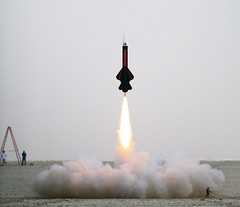
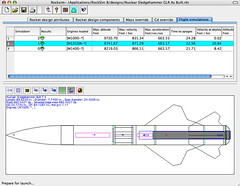
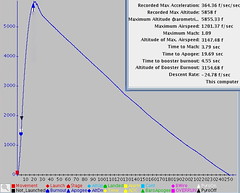
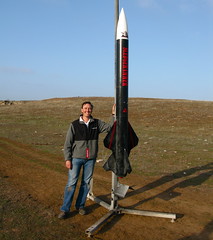
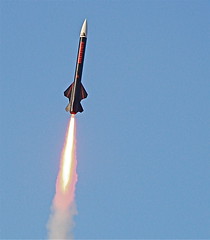

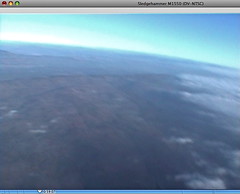

"I would not recommend watching the whole video as it takes a while to get back to ground... unless you are interested in the spinning survey of Snow Ranch."
What?? This video is really fun! Cool idea. I was transfixed and had it fill the screen and watched it to the end (before reading the post). The rocket appears to travel many miles, great landing.
Fantastic!
Beautiful photos also.